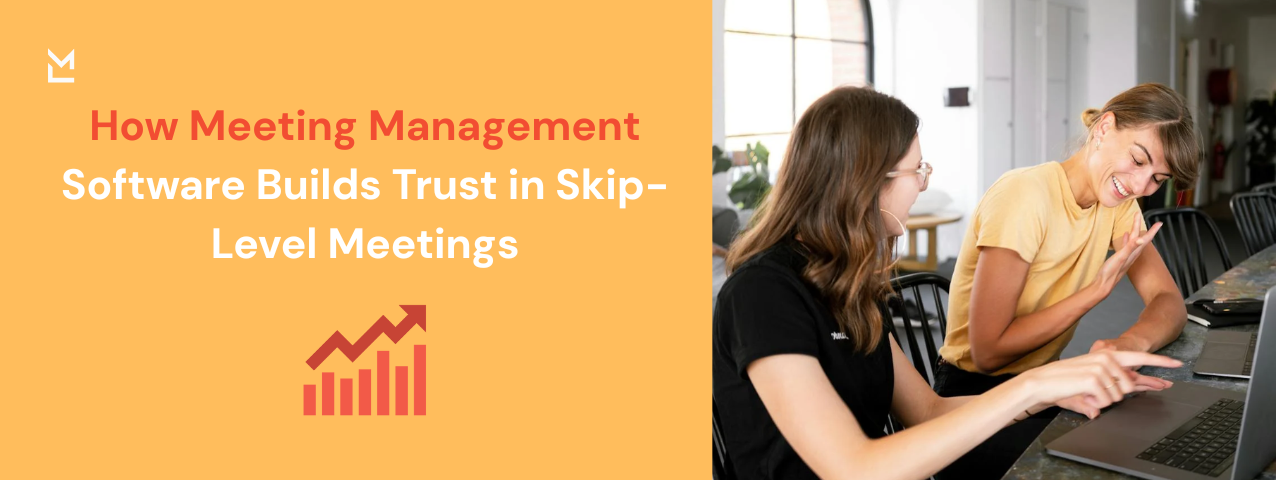
Written with help from MinutesLink - free AI meeting notetaker for online meetings.
Written with support from MinutesLink — a free AI notetaker for online meetings.
Imagine being an employee and getting a calendar invite from your boss’s boss.
You might feel excited… or nervous. What should you say? Will your feedback matter?
This is the emotional reality of skip-level meetings. At their best, these sessions flatten hierarchies and open doors to honest communication. A senior leader gains visibility into the day-to-day challenges of their teams, while employees gain a deeper sense of direction, appreciation, and inclusion.
But trust is the hinge that makes it all work. Without it, skip-level meetings become performative - polite conversations with little impact. Real trust means employees believe that what they share won’t be dismissed or used against them. And that trust only grows when leaders show consistency: documenting discussions, following through on commitments, and circling back with results.
That’s exactly where structure helps. A meeting management platform gives these meetings rhythm and reliability. When participants see meeting notes templates, action items, and clear agendas being used, they recognize that the process isn’t random - it’s intentional.
And when employees see their insights reflected in future projects or improvements, they don’t just feel heard - they feel valued.
If there’s one thing that kills trust, it’s inconsistency.
Leaders who meet sporadically, forget key points, or fail to act on feedback unintentionally send a message: “This doesn’t really matter.”
Meeting management software prevents that message from ever taking root. It centralizes all meeting-related activities - scheduling, note-taking, tracking action items, and sharing updates - so that nothing gets lost.
A well-structured digital system helps leaders:
When meetings are transparent, employees notice. They can look back at the minutes, see who’s responsible for what, and follow the progress of initiatives they helped shape.
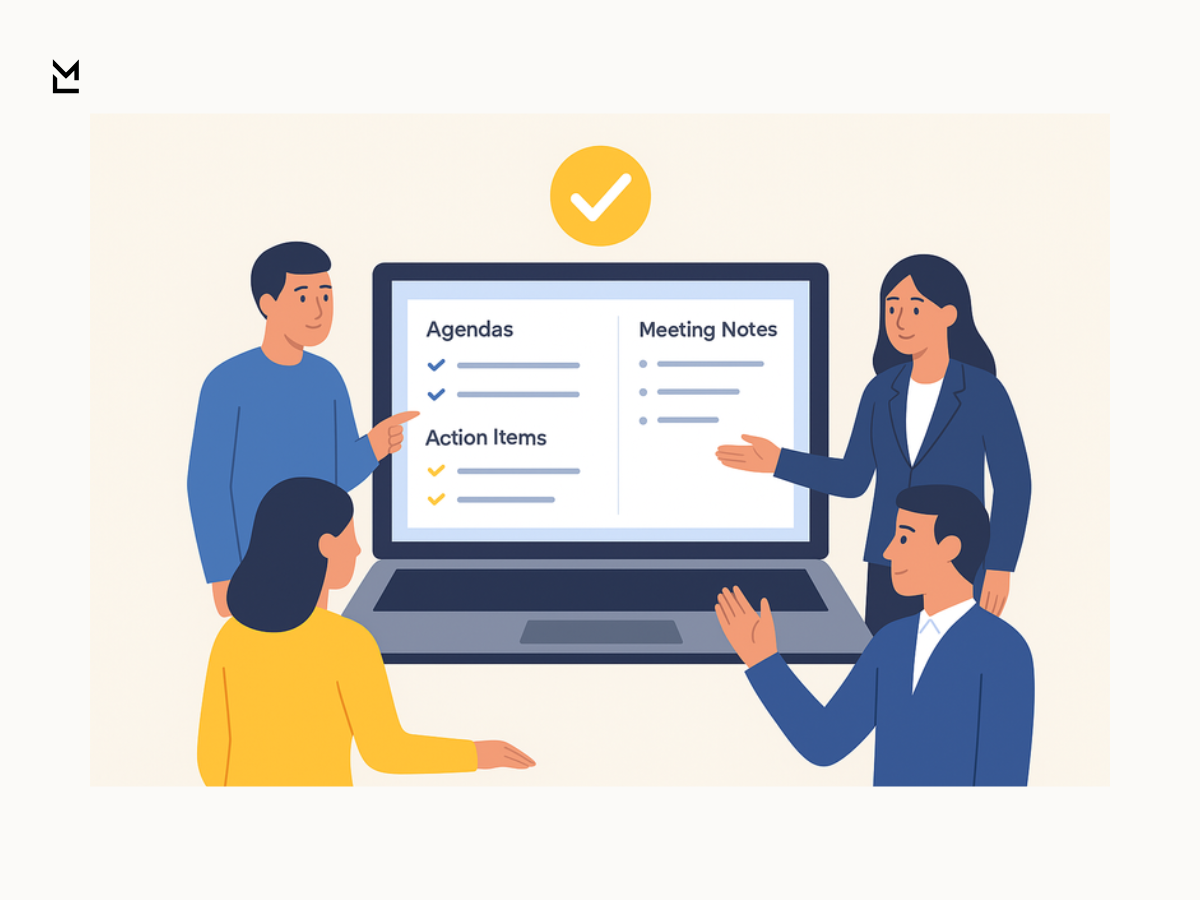
This visibility builds organizational trust. It shows that leadership isn’t just listening - they’re documenting, tracking, and acting.
Transparency also creates equality. Everyone, from new hires to senior managers, can access the same information. There are no hidden notes, no “private versions” of what was discussed. That’s how meeting management software quietly shapes a culture of fairness and follow-through.
Follow-up is the difference between talk and results. In skip-level meetings, capturing action items ensures that ideas don’t get lost and commitments are visible. Here’s an example of how meeting management software can help structure tasks for accountability:
By documenting tasks this way, everyone knows what needs to be done, who is responsible, and when it’s due. This transparency builds trust, demonstrates follow-through, and turns discussions into measurable progress. Small, consistent actions like these are what make skip-level meetings truly effective.
Great communication doesn’t just happen in real time - it’s captured afterward.
Meeting minutes are often underestimated, but they’re one of the most powerful tools leaders have for building credibility. A well-documented summary says: we take our conversations seriously.
Instead of scattered notes and forgotten details, a meeting notes template ensures structure. It captures:
Modern meeting management software automates much of this process. AI note-taking tools can record conversations, detect decision points, and generate drafts of meeting minutes - saving hours of manual work. These templates also standardize how meetings are recorded across the company, so every team uses the same clear format.
Employees notice this consistency. When they receive detailed meeting summaries soon after a session, it builds confidence that leadership is organized, attentive, and reliable. Over time, these small signals add up to a deep sense of trust.
As one HR director put it:
“When people see their words become part of the record - and then see action follow - they stop wondering if leadership listens. They know.”
Templates are like roadmaps - they keep discussions focused and ensure no critical matter slips through. Here are three proven structures for skip-level meetings that balance efficiency, empathy, and clarity.
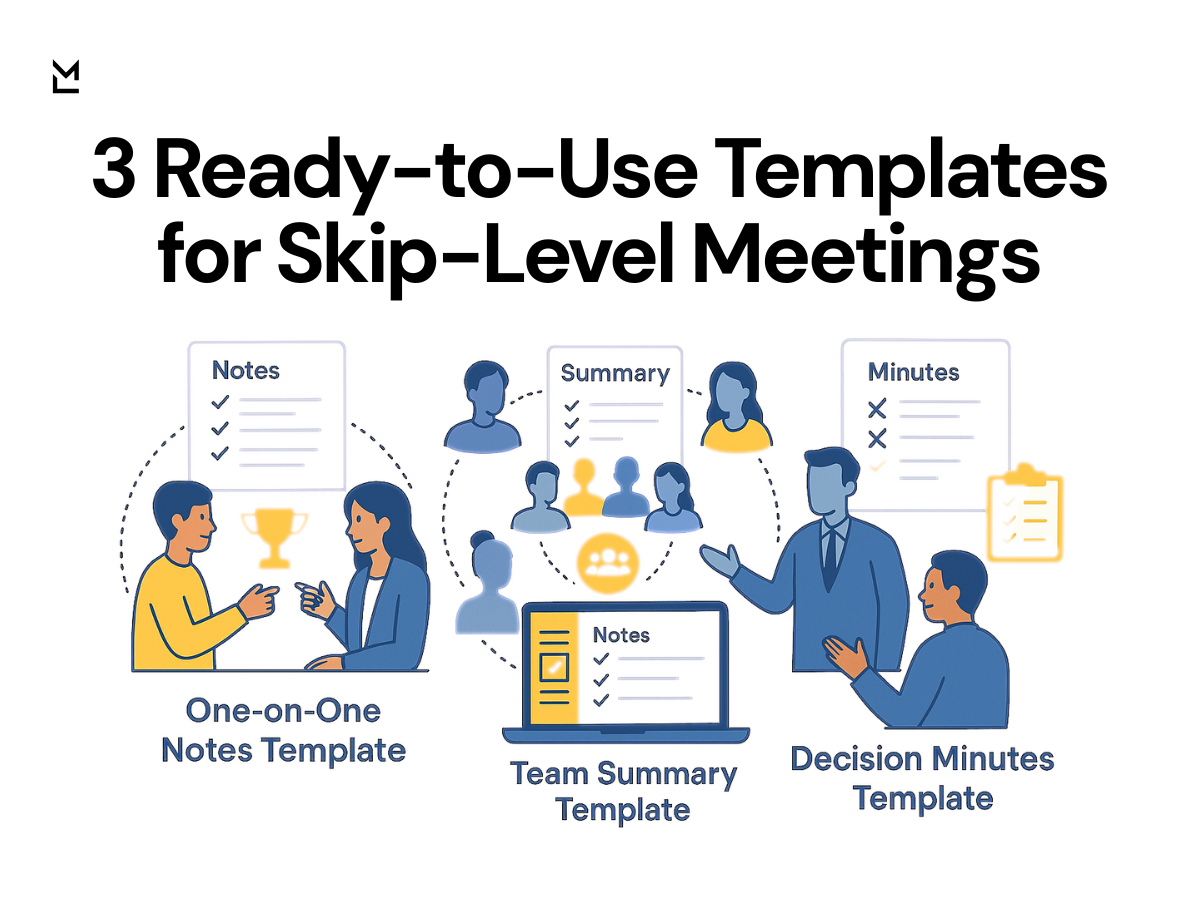
Purpose: Create space for honest, personal dialogue between an executive and an individual employee.
Best for: Exploring challenges, recognizing wins, and discussing career paths.
Template structure:
💡 Why it builds trust:
When both sides see their discussion turned into an action plan, it proves that the meeting wasn’t just talk. This repetition - discussion, documentation, follow-up - forms the backbone of lasting engagement.
Purpose: Capture insights from groups or departments that report indirectly to the executive.
Best for: Identifying patterns, improving collaboration, and strengthening team morale.
Template structure:
💡 Why it builds trust:
When employees see their ideas documented and followed through collectively, it strengthens community. They realize leadership is not only listening but also aligning departments toward shared goals.
3. Decision Minutes Template
Purpose: Capture decisions, agreements, and next steps from strategic skip-level meetings or executive discussions that affect multiple teams.
Best for: Leadership updates, project approvals, and company-wide initiatives.
Template structure:
💡 Why it builds trust:
When employees see major decisions documented clearly, it eliminates the fog that often surrounds leadership meetings. Transparency about “how” and “why” a decision was made creates confidence, even when not everyone agrees with the outcome. It sends a powerful message: we operate with openness, not secrecy.
Decision minutes are particularly valuable when sharing outcomes from executive meetings with broader teams. Instead of vague updates like “leadership is still reviewing it,” employees receive concrete notes outlining progress, rationale, and accountability. Over time, this consistent transparency helps shape a culture where leadership feels accessible - not distant.
Skip-level meetings today look very different from those even five years ago. Hybrid workplaces, remote teams, and digital-first communication have redefined how organizations connect. Many employees now meet their managers primarily through a screen - and that’s okay. Technology has evolved to make these interactions not only possible but powerful.
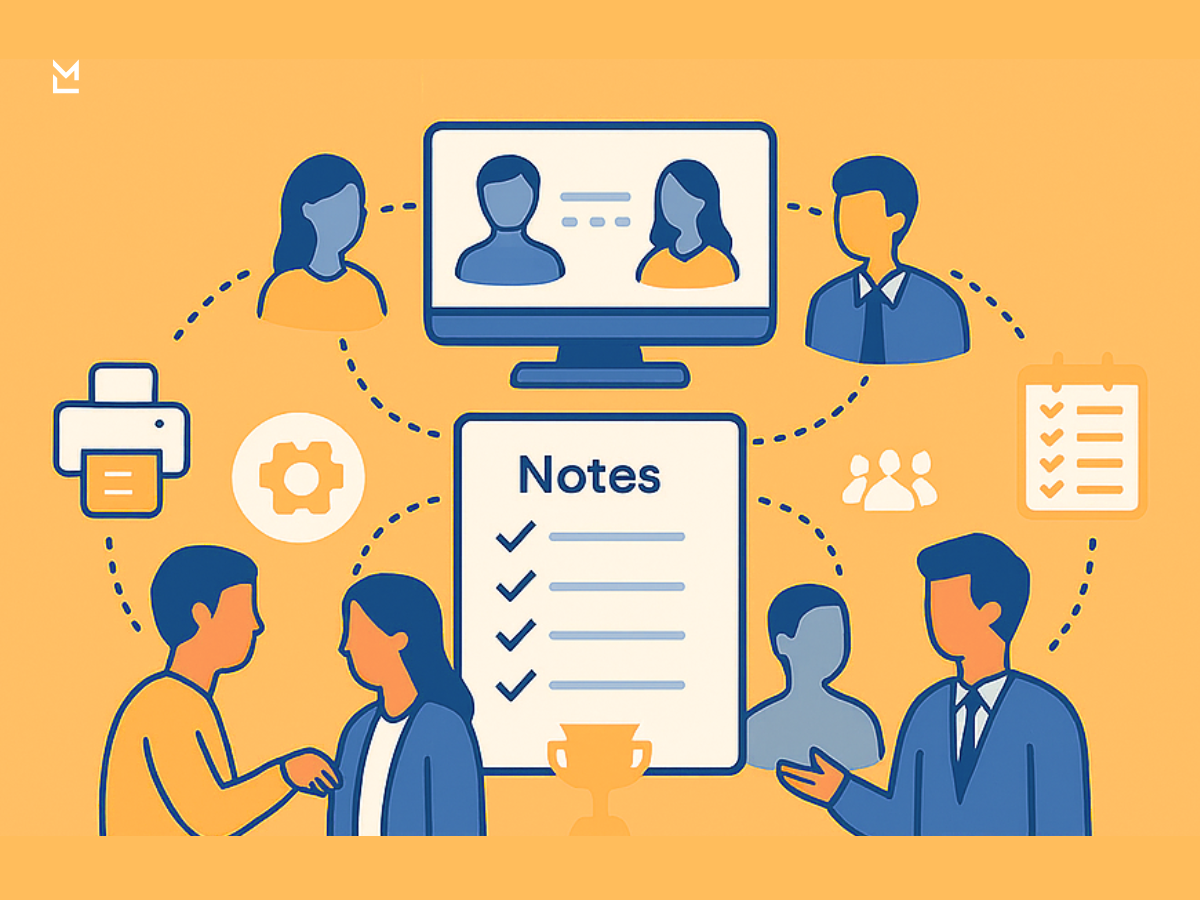
Meeting management software acts as the connective tissue in this new environment. It bridges the gap between physical offices and virtual spaces, ensuring that every participant - whether dialing in from home or sitting in a conference room - has equal access to information.
Here’s how technology supports trust in this context:
For remote or distributed teams, this inclusivity is vital. Nothing destroys morale faster than feeling out of the loop. Meeting software removes that barrier entirely - every person has equal visibility into what’s discussed, what’s decided, and what comes next.
Technology doesn’t replace human leadership; it amplifies it. By making communication smoother, it allows empathy, respect, and accountability to shine through - no matter the distance.
Let’s pause for a moment and talk about why trust matters so much in employee engagement.
Most organizations run surveys, workshops, or motivational programs to measure engagement. But engagement isn’t a checklist - it’s a feeling. According to research on employee engagement by Gallup, trust and recognition remain among the top drivers of retention and productivity.
Skip-level meetings are one of the most direct ways to build that feeling. When a senior leader reaches out to an individual contributor and says, “Tell me what’s working - and what’s not,” it sends a powerful signal: we care enough to ask.
But caring isn’t enough without consistency. Employees trust what they can see - not promises, but patterns. That’s why meeting management software is so crucial here. It reinforces every good intention with structure.
Each time a conversation turns into a documented action item, each time meeting minutes are shared promptly, each time a leader follows up - that’s another layer of trust added. Over time, these layers build into something unshakable.
And the payoff?
When trust becomes the foundation, engagement stops being a “program” and becomes part of everyday culture.
Trust and accountability are two sides of the same coin. You can’t have one without the other.
Meeting management software acts as the engine that keeps accountability running smoothly. It ensures that tasks don’t vanish into email threads or get lost between departments. Every action item is visible, assigned, and trackable - and that visibility makes everyone better.
For managers, it’s about clarity. They can see what’s been promised, who’s responsible, and what’s at risk of slipping behind. For employees, it’s validation - their contributions are recorded and recognized. For teams, it’s coordination - they know how their work connects to the bigger picture.
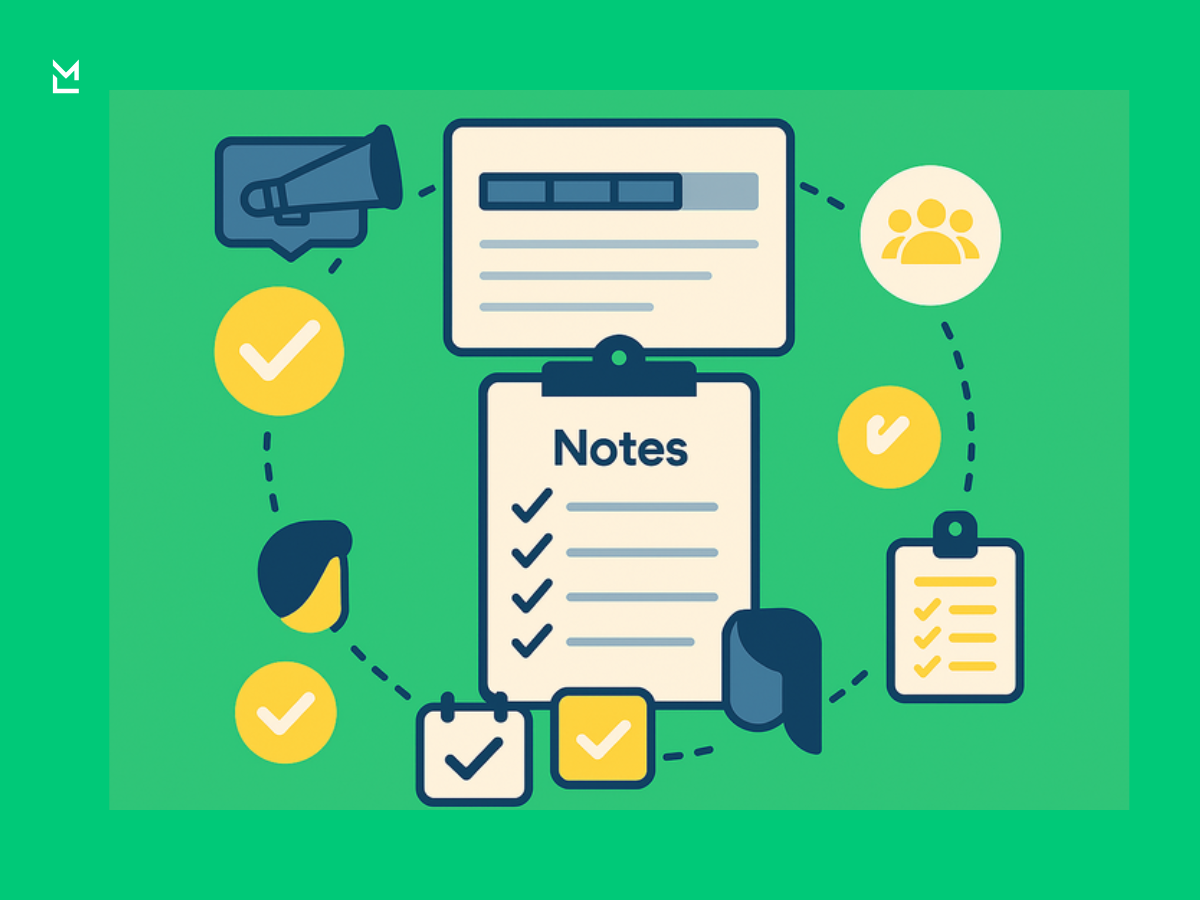
Modern tools even include dashboards that display the progress of action items from multiple meetings. This turns accountability into a shared goal instead of a top-down demand.
When everyone sees that leadership holds itself to the same standards - documenting, tracking, and delivering - it changes the atmosphere. Employees stop fearing oversight and start respecting it. Accountability becomes a mark of integrity, not pressure.
There was a time when meeting minutes meant frantic scribbling, endless formatting, and lost paper notes. Today, technology has turned that chaos into clarity.
AI-driven meeting management platforms can automatically record discussions, transcribe them into searchable text, and highlight key moments - like decisions, risks, or commitments. They can even extract action items automatically and assign them to team members in tools like Slack or Trello.
This automation doesn’t dehumanize meetings - it frees people to focus on what matters: the actual conversation. Leaders can listen more deeply instead of multitasking between talking and typing.
Consistency also improves. When every meeting follows the same template for meeting minutes, information becomes easier to find later. The record of decisions forms a living history of the organization - a memory bank of progress, lessons, and trust.
For skip-level meetings in particular, automation helps eliminate hierarchy barriers. Employees know their words are being accurately captured - not paraphrased or filtered. That accuracy reinforces fairness, which in turn strengthens engagement.
In short:
Automation doesn’t remove the human element from meetings - it amplifies it by allowing humans to focus on connection instead of administration.
Technology alone can’t create engagement; it’s the people behind it who bring meaning. The most effective leaders use meeting management software as a support system for empathy, not a replacement for it.
To make skip-level meetings truly engaging, integrate these employee engagement strategies:
These habits turn meetings into rituals of connection. They’re small acts that, repeated over time, build a workplace where people feel seen, supported, and trusted.
Organization isn’t just a nice-to-have; it’s the backbone of effective leadership. When communication is structured, teams stay aligned, and trust grows. The table below summarizes the key benefits of using meeting management software to keep communication organized:
By implementing these practices, companies ensure that communication isn’t just happening - it’s effective, measurable, and reinforcing the organization’s values. Clear communication fosters accountability, motivates employees, and makes trust an inevitable outcome.
Every organization tells its story through how it runs its meetings.
Are they chaotic and unclear, or structured and empowering?
Each interaction - from a quick one-on-one to a board meeting - is an opportunity to reinforce culture. Meeting management software helps translate leadership values into consistent behaviors. It turns abstract ideals like “transparency” and “engagement” into everyday practices: sharing minutes, updating progress, following up.
As these habits take root, something subtle but profound happens. Employees begin to trust not just their leaders, but the system itself. They know the process is fair, that their voices matter, and that action follows discussion.
That’s how a culture of accountability takes hold - one transparent meeting at a time.
At its core, this isn’t a story about software. It’s a story about people - about how structure can empower sincerity.
When skip-level meetings are supported by smart meeting management software, they become more than conversations. They become engines of progress and trust. Every recorded note, every completed action item, every distributed set of meeting minutes is a small promise kept.
And in leadership, promises kept are everything.
Through transparency, organization, and consistent follow-up, companies prove that they value communication not as a formality, but as a foundation. That’s what builds lasting employee engagement - not slogans or surveys, but systems that turn good intentions into visible results.
In the end, the goal isn’t just to run better meetings. It’s to build stronger relationships - to create a workplace where honesty feels safe, follow-through is the norm, and trust isn’t demanded, but earned.
Because when structure meets sincerity, trust follows naturally.
To make it easier to implement these strategies, we’ve prepared 4 ready-to-use templates for your skip-level meetings. You can download them below and start using them immediately:
Skip-level meetings are conversations between senior leaders and employees who don’t report to them directly. The goal is to build trust, improve communication, and get honest feedback from people closer to day-to-day operations. These meetings help leaders understand what’s really happening across teams - beyond reports and metrics - while giving employees a safe space to share their thoughts, ideas, and challenges.
Using a meeting notes template helps keep your thoughts clear and organized. Start by listing the meeting date, attendees, and agenda. During the meeting, focus on capturing key discussion points, decisions, and any action items (who will do what and by when). After the meeting, clean up your notes so they’re easy to read and share them with everyone involved. Templates make the process faster and ensure you don’t miss any important details.
Meeting minutes are the official written record of what was discussed and decided. To take good minutes, start by preparing a meeting minutes template with sections for the agenda, key points, decisions, and assigned tasks. While the meeting is happening, write down only the most important information - outcomes, next steps, and responsibilities - not every word said. Afterward, review your notes for accuracy and send them to all participants in a timely manner. The goal is clarity, not perfection.
Meeting management software is a digital tool that helps plan, organize, and track meetings more effectively. It can handle everything from scheduling and agenda creation to note-taking, action tracking, and storing meeting minutes. Popular tools integrate with calendars like Google Calendar or MS Teams, making it easier to keep meetings consistent and productive. In short, it’s the system that keeps teams aligned, accountable, and efficient.
Employee engagement strategies are the methods companies use to keep people motivated, connected, and committed to their work. These can include regular feedback sessions, recognition programs, transparent communication, growth opportunities, and skip-level meetings. The best strategies go beyond perks - they create an environment where employees feel heard, valued, and trusted to make an impact.